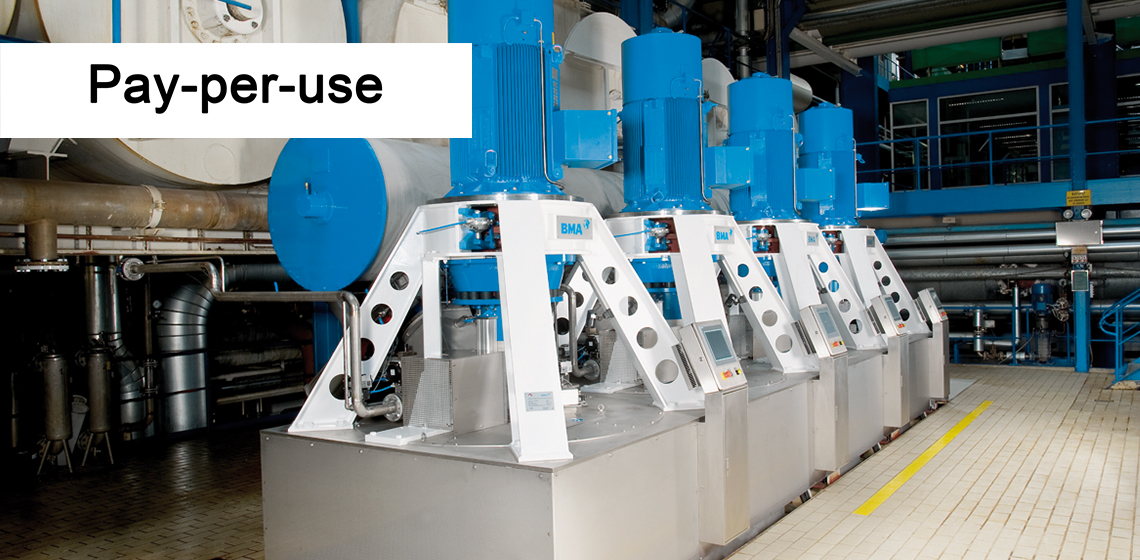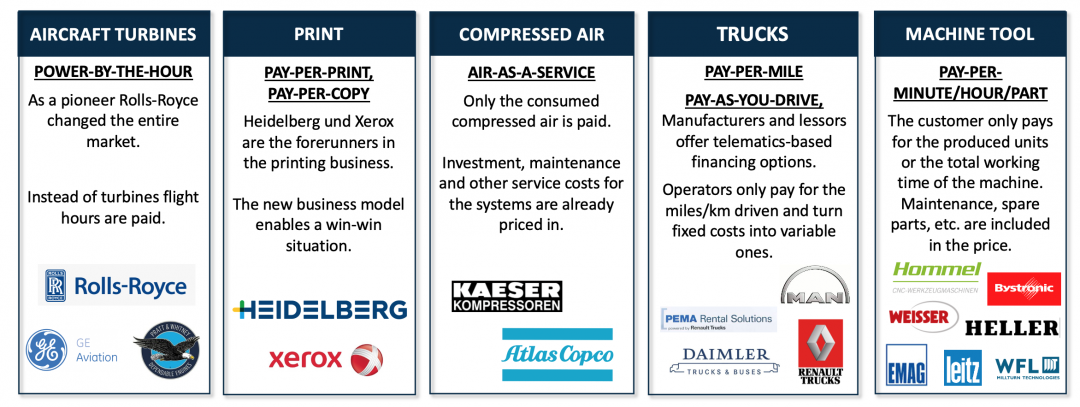For some time now, small and medium-sized enterprises across the industry have been in a state of upheaval or have been exposed to enormous economic fluctuations. In this context, the issue of liquidity also plays a major role. As a result, manufacturers of industrial production machinery, for example, are considering how they can adapt their business model to the new situation. "pay-per-use" makes it possible: instead of selling their customers the machines at full price, machine manufacturers charge for the actual use of a machine by the customer. This concept is called "pay-per-use."
For example, when a company uses a printer today, the machine is not purchased, but instead a cent amount per printed page is usually paid to the manufacturer of the printer - "pay-per-page". The basic idea behind this is logical: only those who use a thing should pay for it.
The streaming providers Netflix or Amazon Prime are also setting an example: flexible offers are made available that are geared to the consumer's wishes in the digital age. These companies do not aim to sell products, but to offer them in the form of a service.
In the mechanical engineering sector, the manufacturer provides machines and equipment and the customer only pays for actual use, usually combined with a monthly basic fee. In the manufacturing industry, customers usually pay a flat rate, for example per component/product produced ("pay-per-part"). The advantage of this model is obvious: the customer does not need to make a high initial investment in the purchase of the system.
From a customer's point of view, the model is particularly attractive if they cannot estimate the utilization of a machine from the outset and are therefore uncertain whether and when the initial investment will pay for itself or if it is clear from the outset that the purchased machine will only be used for part of the year, such as during campaigns in the sugar industry. Manufacturers who offer "pay-per-use" use this model primarily to address cost-sensitive customer groups who are not interested in amortizing a machine purchase associated with high one-time costs or who cannot currently afford it financially.


